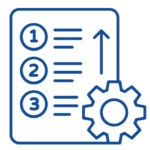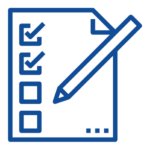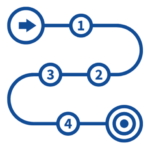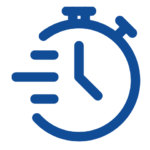The Great Lakes Sediment and Nutrient Reduction Program provides grants to local and state units of government and nonprofit organizations to install erosion and sediment control practices in the Great Lakes basin to address nutrient and sediment loading by funding the implementation of projects. Since 2010, funding for the program has been provided by the Great Lakes Restoration Initiative. The program is able to support projects that are not typically funded by other U.S. EPA or USDA cost-share programs, allowing the program to fund innovative and unique projects.
The Great Lakes Sediment and Nutrient Reduction Program is a state and federal partnership managed by the Great Lakes Commission in cooperation with the U.S. Department of Agriculture’s Natural Resource Conservation Service (NRCS), the U.S. Environmental Protection Agency (U.S. EPA), and the eight Great Lakes states. It is directed by a regional Soil Erosion and Sedimentation Task Force that includes representatives from the eight Great Lakes states, NRCS and U.S. EPA. The Task Force reviews yearly needs in the basin and adapts the grant program to meet current needs. It employs a rigorous review process that selects projects expected to generate the most impactful environmental and economic benefits for the Great Lakes region.
Click through the sections below to learn more about this funding opportunity.
 Projects must be located within the United States portion of the Great Lakes basin. Projects seeking to improve conditions within an inland lake of the Great Lakes basin must demonstrate benefits to local communities in the basin, beyond lakefront property owners, in order to be considered. Projects with a discernable benefit to a Great Lake are likely to be preferred during scoring of proposals.
Projects must be located within the United States portion of the Great Lakes basin. Projects seeking to improve conditions within an inland lake of the Great Lakes basin must demonstrate benefits to local communities in the basin, beyond lakefront property owners, in order to be considered. Projects with a discernable benefit to a Great Lake are likely to be preferred during scoring of proposals.
Click on the next section to learn more about this funding opportunity’s eligibility requirements.
 Only areas within the United States portion of the Great Lakes basin are eligible for funding. To be considered for funding, applicants must:
Only areas within the United States portion of the Great Lakes basin are eligible for funding. To be considered for funding, applicants must:
Click on the next section to learn more about the matching requirements for this funding opportunity.
 A twenty-five percent match will be required of each project , and although additional match greater than twenty-five percent is welcome, excess match does not affect scoring.
A twenty-five percent match will be required of each project , and although additional match greater than twenty-five percent is welcome, excess match does not affect scoring.
The following list provides some examples of acceptable match, but is not intended to be exhaustive:
Click on the next section to learn more about the eligible costs for this funding opportunity.
 Under this year’s program, GLSNRP will fund two types of projects aimed at reducing nonpoint source loading of nutrients and sediment to the Great Lakes: Agricultural Projects, and Streambank/Shoreline Projects.
Under this year’s program, GLSNRP will fund two types of projects aimed at reducing nonpoint source loading of nutrients and sediment to the Great Lakes: Agricultural Projects, and Streambank/Shoreline Projects.
Click on the next section to learn more about this funding opportunity’s project timeline.
 All work must be completed within a four-year period, inclusive of the time required to obtain all permits and approvals.
All work must be completed within a four-year period, inclusive of the time required to obtain all permits and approvals.
Click on the next section for this funding opportunity’s application deadline and forms.
 Applications are due on April 29, 2025 at 5:00 p.m. EST. Instructions, templates, and the web application form are available here.
Applications are due on April 29, 2025 at 5:00 p.m. EST. Instructions, templates, and the web application form are available here.
Click on the next section to access the Contact Information for this funding opportunity.

A WaterNow Alliance Initiative
Whether you have a project that needs support or are just dipping your toe in, our team of experts is here to help.